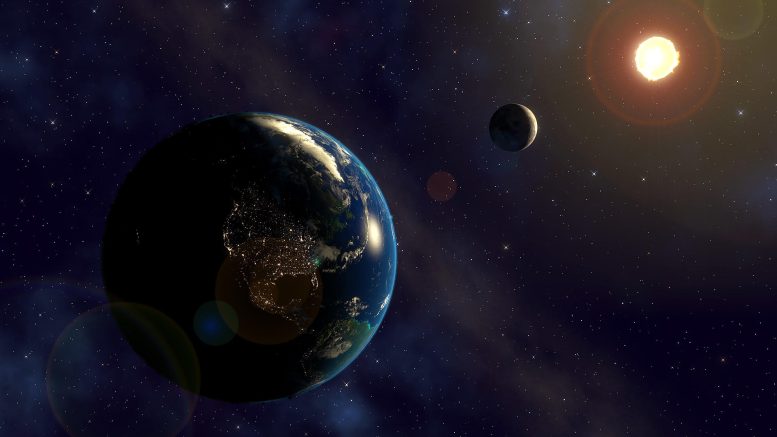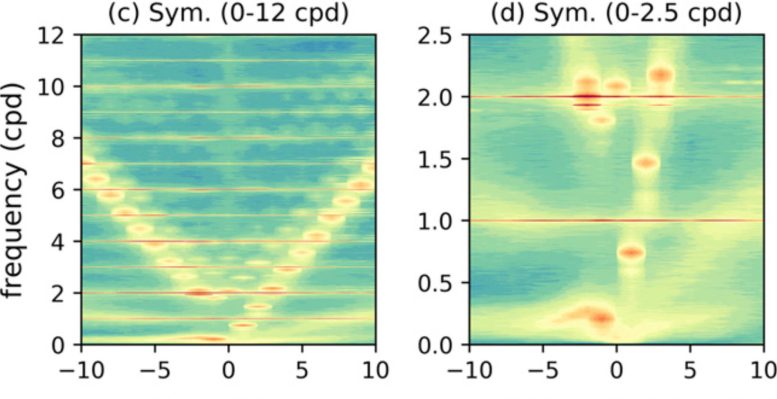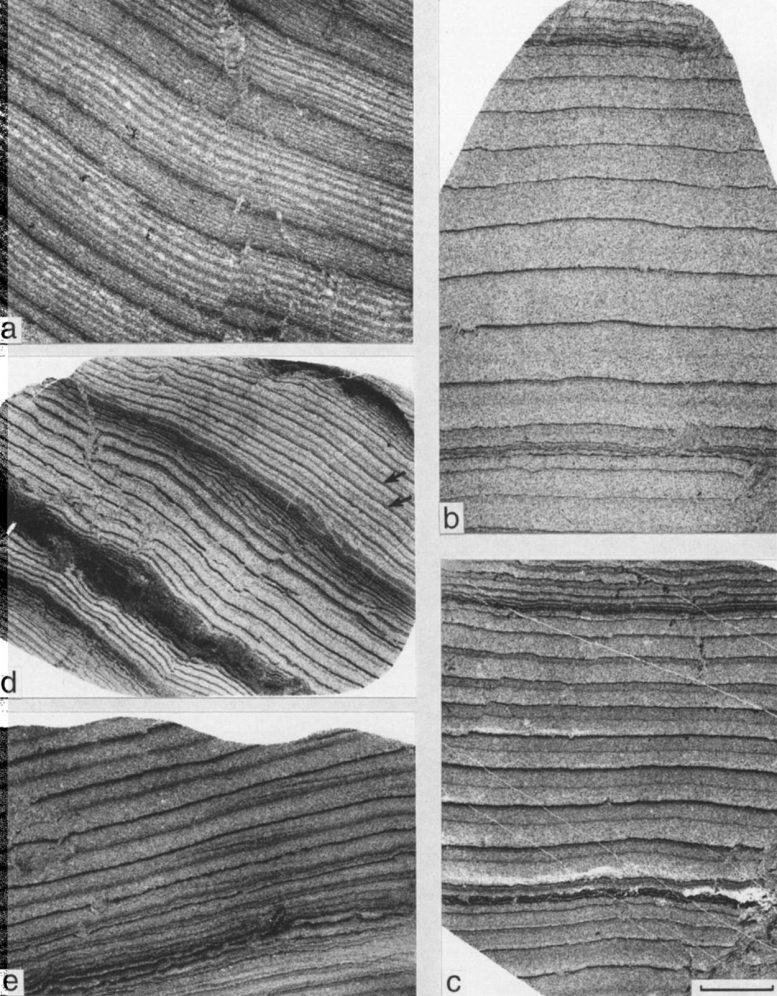
A team of astrophysicists have shown that from approximately two billion years ago until 600 million years ago, an atmospheric tide driven by the sun countered the effect of the moon, keeping Earth’s rotational rate steady and the length of day at a constant 19.5 hours. Credit: Kevin M. Gill
The findings provide new insights into how climate change will influence the duration of days and the reliability of climate modeling instruments.
Astrophysicists from the University of Toronto (U of T) have shed light on the mystery of why Earth’s day, which was gradually increasing due to the moon’s tidal influence, paused in its lengthening for over a billion years.
Their research indicates that from around two billion years ago to 600 million years ago, solar-driven atmospheric tides counteracted the moon’s impact, maintaining Earth’s spin rate and stabilizing the day’s duration at 19.5 hours.
Without this billion-year pause in the slowing of our planet’s rotation, our current 24-hour day would stretch to over 60 hours.
The study describing the result was recently published in the journal Science Advances. Drawing on geological evidence and using atmospheric research tools, the scientists show that the tidal stalemate between the sun and moon resulted from the incidental but enormously consequential link between the atmosphere’s temperature and Earth’s rotational rate.
The paper’s authors include Norman Murray, a theoretical astrophysicist with U of T’s Canadian Institute for Theoretical Astrophysics (CITA); graduate student Hanbo Wu, CITA and Department of Physics, U of T; Kristen Menou, David A. Dunlap Department of Astronomy & Astrophysics and Department of Physical & Environmental Sciences, University of Toronto Scarborough; Jeremy Laconte, Laboratoire d’astrophysique de Bordeaux and and a former CITA postdoctoral fellow; and Christopher Lee, Department of Physics, U of T.

A power spectrum of the Earth’s atmosphere. The x-axis is wavelength, e.g. 5 is a wavelength of one fifth of the circumference of the Earth for a wave traveling west to east, and -5 means the same, but for waves traveling east to west. The y-axis is frequency, in cycles per day, e.g. 2 means two cycles per day, or 12 hours. The thin horizontal brown lines show the Solar forcing at one, two, three, etc. cycles per day (24 hours, 12 hours, 8 hours period, and so forth). Credit: Sakazaki & Hamilton
When the moon first formed some 4.5 billion years ago, the day was less than 10 hours long. But since then, the moon’s gravitational pull on the Earth has been slowing our planet’s rotation, resulting in an increasingly longer day. Today, it continues to lengthen at a rate of some 1.7 milliseconds every century.
The moon slows the planet’s rotation by pulling on Earth’s oceans, creating tidal bulges on opposite sides of the planet that we experience as high and low tides. The gravitational pull of the moon on those bulges, plus the friction between the tides and the ocean floor, acts like a brake on our spinning planet.
“Sunlight also produces an atmospheric tide with the same type of bulges,” says Murray. “The sun’s gravity pulls on these atmospheric bulges, producing a torque on the Earth. But instead of slowing down Earth’s rotation like the moon, it speeds it up.”
For most of Earth’s geological history, the lunar tides have overpowered the solar tides by about a factor of ten; hence, the Earth’s slowing rotational speed and lengthening days.
But some two billion years ago, the atmospheric bulges were larger because the atmosphere was warmer and because its natural resonance — the frequency at which waves move through it — matched the length of day.
The atmosphere, like a bell, resonates at a frequency determined by various factors, including temperature. In other words, waves — like those generated by the enormous eruption of the volcano Krakatoa in Indonesia in 1883 — travel through it at a velocity determined by its temperature. The same principle explains why a bell always produces the same note if its temperature is constant.

Murray and his collaborators relied on geologic evidence in their study, like these samples from a tidal estuary that reveal the cycle of spring and neap tides. Credit: G.E. Williams
Throughout most of Earth’s history that atmospheric resonance has been out of sync with the planet’s rotational rate. Today, each of the two atmospheric “high tides” take 22.8 hours to travel around the world; because that resonance and Earth’s 24-hour rotational period are out of sync, the atmospheric tide is relatively small.
But during the billion-year period under study, the atmosphere was warmer and resonated with a period of about 10 hours. Also, at the advent of that epoch, Earth’s rotation, slowed by the moon, reached 20 hours.
When the atmospheric resonance and length of day became even factors — ten and 20 — the atmospheric tide was reinforced, the bulges became larger and the sun’s tidal pull became strong enough to counter the lunar tide.
“It’s like pushing a child on a swing,” says Murray. “If your push and the period of the swing are out of sync, it’s not going to go very high. But, if they’re in sync and you’re pushing just as the swing stops at one end of its travel, the push will add to the momentum of the swing and it will go further and higher. That’s what happened with the atmospheric resonance and tide.”
Along with geological evidence, Murray and his colleagues achieved their results using global atmospheric circulation models (GCMs) to predict the atmosphere’s temperature during this period. The GCMs are the same models used by climatologists to study global warming. According to Murray, the fact they worked so well in the team’s research is a timely lesson.
“I’ve talked to people who are climate change skeptics who don’t believe in the global circulation models that are telling us we’re in a climate crisis,” says Murray. “And I tell them: We used these global circulation models in our research, and they got it right. They work.”
Despite its remoteness in geological history, the result adds additional perspective to the climate crisis. Because the atmospheric resonance changes with temperature, Murray points out that our current warming atmosphere could have consequences in this tidal imbalance.
“As we increase Earth’s temperature with global warming, we’re also making the resonant frequency move higher — we’re moving our atmosphere farther away from resonance. As a result, there’s less torque from the sun, and therefore, the length of the day is going to get longer, sooner than it would otherwise.”
Reference: “Why the day is 24 hours long: The history of Earth’s atmospheric thermal tide, composition, and mean temperature” by Hanbo Wu, Norman Murray, Kristen Menou, Christopher Lee and Jeremy Leconte, 5 July 2023, Science Advances.
DOI: 10.1126/sciadv.add2499









I suspect that the change in the rotation rate has more things changing than just the applied forces between the Earth, the Moon, and Earth’s Atmospheric density. More things would be changing such as the higher density mass inside the Earth migrates toward the core, while the lower density mass moves toward the surface. The Sun, Earth and the Moon gain mass, so the Smaller orbs move away from the Larger orbs, and the time to orbit the Larger Orbs keeps increasing. This means the Time to move around the Sun Increases, and the time for the Moon to orbit the Earth Increases. The Earth Gains mass, and it gains radius, so the total height of the Atmosphere increases to a point, and then starts moving down as it occupies the greater surface area, and it get compressed more as Earth’s mass increases. This is recorded in the range of animals and plants that got to the point they were occupying areas all the way to Earth’s poles, and around 40 million years ago this quit briefly, but by 37 million years ago the Poles got cold enough to freeze over. The length of the lunar months are recorded in the ridges on ancient sea shells, and in the sediment layers where water deposited these layers. The Ocean elevations peaked around 82 million years ago, and poured off the continents by 70 million years ago because the volume of the Ocean Basins increased so dramatically. In the middle of the Cretaceous, the Elevation of the ” Half pressure ” exceeded 36,000 feet above sea level. It is now reduced to around 18,000 feet above sea level. It is the Temperature – Pressure – Volume – Altitude – Gravity Relationship of the Atmosphere that has changed slowly over billions of years. That is PV = nRt. The nR would encompass the altitude – Gravity ( compression rate ) part of the relationship.
One of you out there will ” click ” with this new concept, and find the complex solutions.